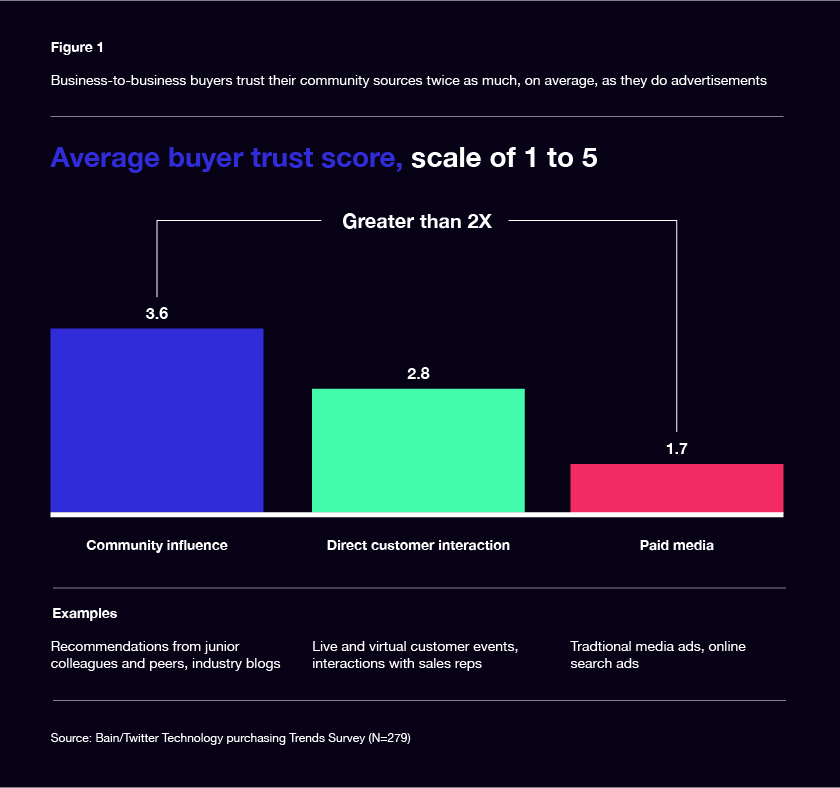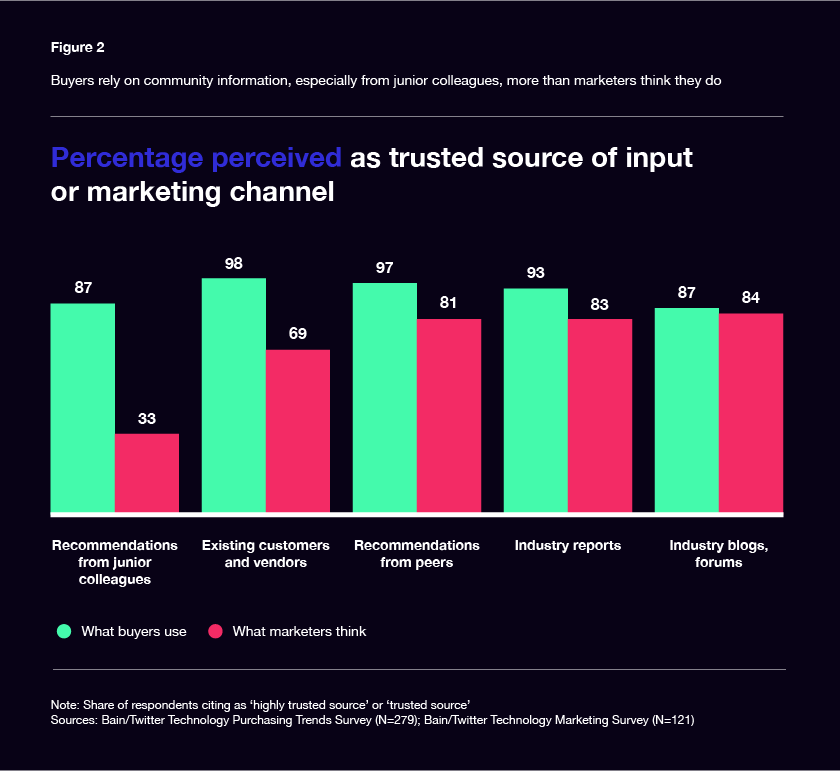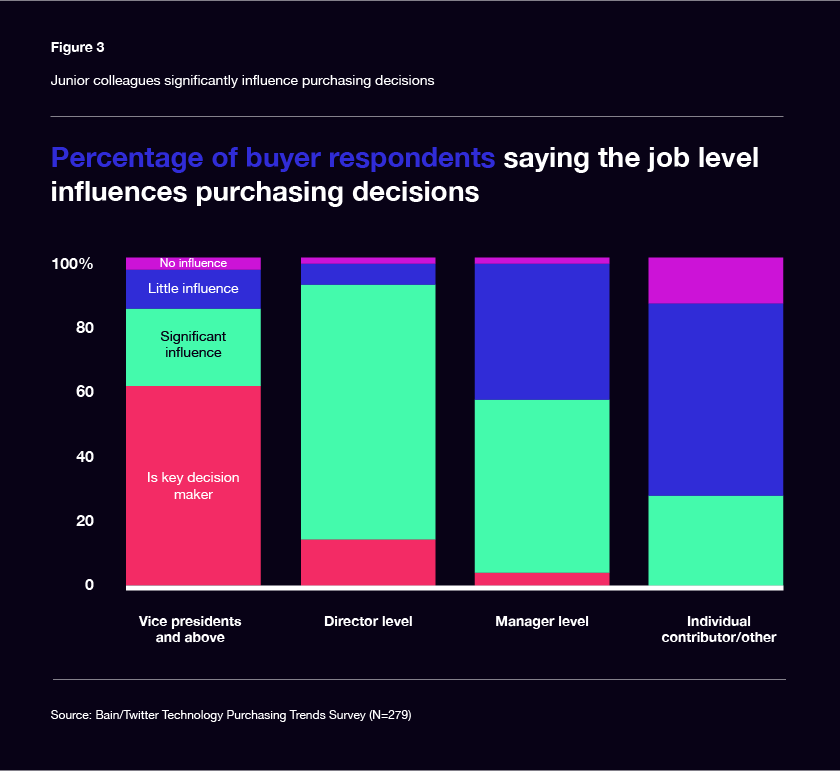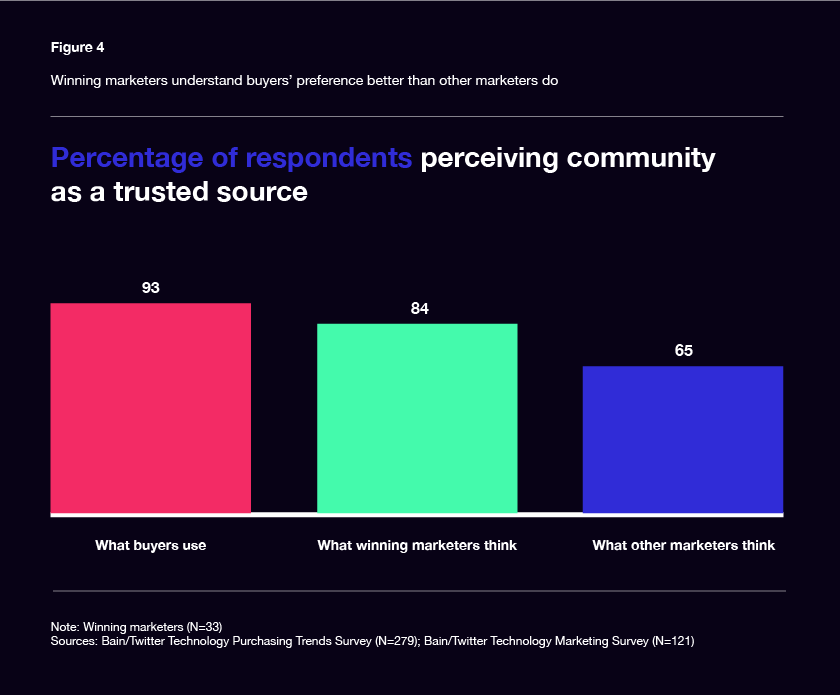
Understanding buyer behaviour: Why community influence will be key to B2B marketing success
Covid-19, Coronavirus, The Pandemic—however you refer to it personally, the impact is shared by all of us. From the decimation of the office and the rise of WFH (Working From Home for the abbreviation-averse), it is safe to say that the old normal and the new normal will present a different way of working for everyone.
The main objective for many is survival
Just as importantly for those of us in marketing, the pandemic has forced us to shelve those well laid plans, those KPIs or objectives that were set at the start of the year, even our New Year’s resolutions. These goals have, for a large percentage of us, been left at the wayside. Instead, we have been forced into a reactive way of working with mere survival being the major focus for many businesses.
Yet as we have adapted, as we have survived, this has presented marketing leaders with a broad set of challenges to face alongside the immediate and more short-term focused changes that Covid-19 brought about.
Most notably, how has the buying behavior of our audience changed and evolved? How can we, as marketers, move from a reactive to a proactive approach in order to gain the insights we need? And how can we use this data to continue to give an experience that meets the expectations of our audience; to take advantage of every visit, every click, every download in order to continue to deliver against our objectives?
This starts by understanding more about our buyers’ behavior.
The case for change
Broadly speaking, Covid-19 has quickened the pace of change that we were moving towards anyway—namely the digital transformation agenda. As businesses across the world saw their supply chains grind to a halt, and their factories become desolate spaces that would be more fitting in some form of futuristic Western (augmented reality tumbleweed, anyone?), it was rapidly evident that they were behind the curve. Could manual processes be replaced with automated machinery? Can AI and machine learning start to deliver on a 24/7 basis? Lots of questions, lots of answers.
For marketers, however, the challenges faced actually remained fairly consistent:
- How can we understand our audience enough?
- How are their preferences and buying behaviors changing?
- How can we give them what they are looking for in order to capture their business?
Understanding buyer behavior
Knowing your audience is a must for any marketer. If you’re looking to deliver success with no audience insights, you’re simply hamstringing yourself.
As you can imagine, there are a LOT of insights at the moment that look at the impact of Covid-19 and how it has affected buyer behavior and marketing dynamics. Interestingly, some of these insights are uncovering some startling revelations about the disconnect between marketers and their audience.
A new survey conducted by Bain & Company and Twitter looked at the behavioral differences between 279 US buyers and 121 marketers. It revealed that buyers overwhelmingly trust information from their professional community—mainly their peers, current customers or vendors, but also more junior colleagues and industry sources.
In contrast, marketers consistently underestimate the importance of conversations in this professional community—and they overestimate their own ability to direct purchasing decisions.

When we consider our target audience and how we approach them, an even more relevant question is “who we are talking to?” Lead generation content created to engage with this audience puts contacts into a pipeline, but what about those “lower down the food chain”? Sure, they might not hold budget, but as the chart below shows, their influence is by no means less relevant.
This presents ample opportunity for B2B organizations to position themselves as a Trusted Advisor across multiple stakeholders and truly build a community that delivers a consistent source of referred opportunities.

However, in this instance it is important to differentiate between influencers and decision makers, and what marketers will do to attract both audiences. While our offer remains consistent, our approach, our content, the value and benefits we can deliver, and the pain points and solutions that we provide need to be made relevant to each different persona to allow for the greatest level of penetration and ultimately success into the organizations we are targeting.
As we see below, influence exists throughout the organizational hierarchy:

This, of course, builds the business case for creating a community that in turn lends itself to advocacy programmes, thought leadership, and a multitude of other options that can be invested in. Not all of it is going to be financially possible, and it isn’t surprising to see the organizations with mammoth marketing budgets excelling here. Ultimately, money talks.
However, this does not diminish the reality of the situation: buyers use their community as a trusted source. If a company chooses not to invest in community then they will ultimately be left behind by those that do, as shown below:

Spearfishing for marketers
So if all of this data is showing us that our understanding of how our audience is buying is incorrect, then how can we ever be in a position to offer them an experience that is fit for purpose? The truth of the matter is we can’t. Sure, we may well still achieve some success, but it is directionless.
But this isn’t really any different to a fisherman letting a net into the ocean to catch fish. Sure, he is likely to catch something, but is it a fish he wants? Is it enough fish? Will it even be a fish? Will that fish feed his family and allow them to grow and catch more fish? Now, if we want the best fish, or the most fish, or fish that will generate the most revenue, we use the data we have at our disposal to find the best spots, the best tools and so on.
The logic is identical when it comes to achieving success as marketers—use the data that is at our disposal to give us the greatest chance of success.
Ready for more marketing inspiration? Download Putting your audience first: The New Rules of Content Marketing for 2020 and Beyond
Read the latest positioning trends and insights.
Tap into our brand and product positioning, storytelling, and creative expertise to inspire your next strategic move.

